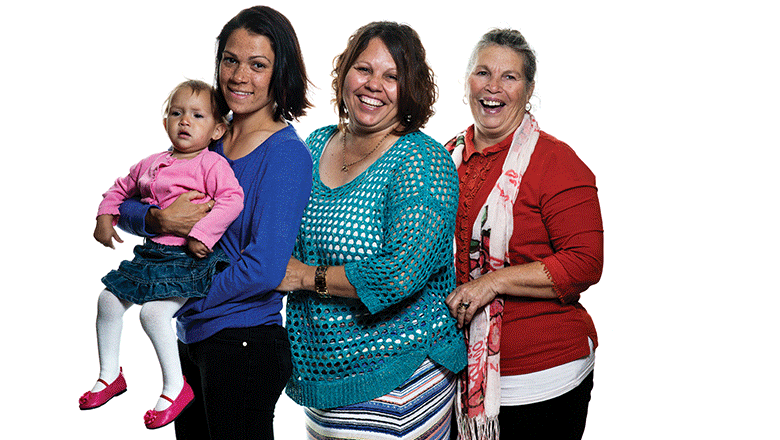Search
Research
Redressing ‘unwinnable battles’: Towards institutional justice capital in Australian child protectionAustralia’s history of negative child protection outcomes for children in state care highlights the sustained, systemic nature of serious harm. Situated in emerging conversations on structural challenges and state violence for parents involved in child protection systems, we trace the resources and barriers to responsive and ‘just’ child protection practice, highlighting how institutions can serve to compound disadvantage and injustice. We argue that addressing challenges such as access to advocacy at the level of the individual is to miss the underlying politics of oppression that serves to keep families marginalised.
Research
Disparities in severe neonatal morbidity and mortality between Aboriginal and non-Aboriginal births in Western Australia: a decomposition analysisThe health disadvantages faced by Australian Aboriginal peoples are evidenced in early life, although few studies have focused on the reasons for population-level inequalities in more severe adverse outcomes. This study aimed to examine the scale of disparity in severe neonatal morbidity (SNM) and mortality between Aboriginal and non-Aboriginal births and quantify the relative contributions of important maternal and infant factors.
Research
Measuring social and emotional wellbeing in aboriginal youth using strong souls: A rasch measurement approachCurrently, there are few robustly evaluated social and emotional wellbeing (SEWB) measures available for use with Aboriginal youth in research, policy, and practice.
Research
Indigenous peoples and inclusion in clinical and genomic research: Understanding the history and navigating contemporary engagementDespite significant improvements in pediatric cancer survival outcomes, there remain glaring disparities in under-represented racial and ethnic groups that warrant mitigation by the scientific and clinical community. To address and work towards eliminating such disparities, the Pacific Pediatric Neuro-Oncology Consortium (PNOC) and Children's Brain Tumor Network (CBTN) established a Diversity, Equity, and Inclusion (DEI) working group in 2020. The DEI working group is dedicated to improving access to care for all pediatric patients with central nervous system (CNS) tumors, broadening diversity within the research community, and providing sustainable data-driven solutions.
Research
Conceptualising Wellbeing for Australian Aboriginal LGBTQA+ Young PeopleIt is likely that young people who are both Aboriginal and Torres Strait Islander and LGBTQA+ would be at increased risk for poor mental health outcomes due to the layered impacts of discrimination they experience; however, there is very little empirical evidence focused on the mental health and wellbeing of Aboriginal and Torres Strait Islander LGBTQA+ young people. The current study represents a qualitative exploration of wellbeing among Aboriginal LGBTQA+ young people.
Research
Surgery for rheumatic heart disease in the Northern Territory, Australia, 1997-2016: what have we gained?Between 1964 and 1996, the 10-year survival of patients having valve replacement surgery for rheumatic heart disease (RHD) in the Northern Territory, Australia, was 68%. As medical care has evolved since then, this study aimed to determine whether there has been a corresponding improvement in survival.
Research
Western Australia remote aeromedical substance use disorders outcomesSubstance use disorders (SUDs) cause significant harm to regional Australians, who are more likely to misuse alcohol and other drugs (AODs) and encounter difficulty in accessing treatment services. The primary aims of this study were to describe the demographics of patients aeromedically retrieved from regional locations and compare hospital outcomes with a metropolitan-based cohort.
Research
High prevalence of hearing loss in urban Aboriginal infants: the Djaalinj Waakinj cohort studyChris Deborah Tamara Brennan-Jones Lehmann Veselinovic PhD AO, MBBS, MSc BSc(Hons) MClinAud PhD Head, Ear and Hearing Health Honorary Emeritus Fellow
Research
The Social and Emotional Well-being of Indigenous Peoples Living With Diabetes: A Systematic Review ProtocolGlobally, Indigenous people have a greater incidence and earlier onset of diabetes than the general population and have higher documented rates of emotional distress and mental illness. This systematic review will provide a synthesis and critical appraisal of the evidence focused on the social and emotional well-being of Indigenous peoples living with diabetes, including prevalence, impact, moderators, and the efficacy of interventions.

News & Events
Urgent need to reduce preventable deaths in Aboriginal MumsA study by researchers at The Kids Research Institute Australia has found Aboriginal mothers are at a significantly greater risk of preventable death than other Australia
